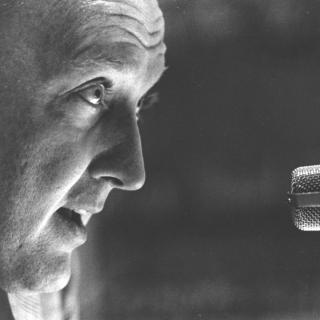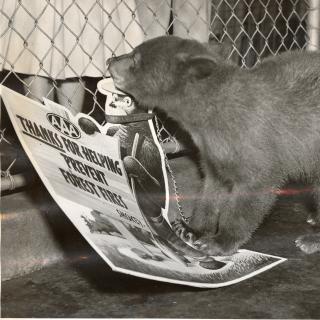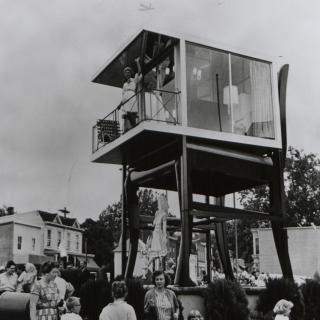The Lady is a Vamp
Washington has always been a town that likes gossip and scandal. So, it’s probably not a surprise that turn-of-the-century Washingtonians were quite interested in vampire stories. You see, back then, “vampire” was a term for a dark, seductive woman who lured men into her poisonous embrace, sucked him dry of wealth and left him debauched and ruined – a femme fatale of the most frightening and glamorous sort.
An independent and sexual woman with power over men? Yikes! If the newspapers saw a chance to embellish an account of a "real vampire," boy did they go for it.
Take the case of Despina Davidovitch Storch. A Turkish beauty born in 1895, she captured imaginations in 1918 when she was arrested as a German spy. Storch had supposedly wooed admirals and ambassadors in all the great capitals in Europe and lived in splendor with unlimited funds from the German Foreign office.
She also graced Washington with her presence, going by the alias "Baroness de Bellville." Word has it she held her famous salons, to which all the important diplomats and military men were invited, in her rooms at the Shoreham Hotel. It was also allegedly here where she met with the German ambassador to pass on everything she learned at her salons.
The fortune of the "Turkish Delight," this "modern Cleopatra" unfortunately did not last long after being captured. Storch died of pneumonia shortly after being taken into custody (there were whispers that it was poison!).[1] The 23-year-old ‘vamp’ was buried in a white coffin at funeral attended only by her accomplice and probable lover, Baron Henri Deville, who was let out of federal custody for the occasion.[2]
The Washington Times was so enamored with Storch that it ran an eleven chapter series entitled "Mme. Storch – Vampire and German Spy" in the summer of 1918 – a full two page spread each Sunday detailing her career. You can read chapters 5-11 in the Library of Congress’s Chronicling America project. See the links below:
- Chapter V - 02 June 1918 - Part 1, Part 2
- Chapter VI - 09 June 1918 - Part 1, Part 2
- Chapter VII - 16 Jun 1918 - Part 1, Part 2
- Chapter VIII - 23 Jun 1918 - Part 1, Part 2
- Chapter IX - 30 June 1918 - Part 1, Part 2
- Chapter X - 07 July 1918 - Part 1, Part 2
- Chapter XI (End) - 13 July 1918 - Part 1, Part 2
But Storch wasn’t the only vampire getting press in Washington. Though the papers did not devote quite as much attention to other vampires, they were still a very popular topic of “news.” Consider these headlines:
- Can a Blonde be a Vampire? (An heiress takes to the stage to prove that they can be)
- The Smile that Led to Murder. (An 18-year-old murderess tells all)
- Knee Length Skirts Added to Peek-a-books Make Vamps, She Says. (F Street was just lousy with those flappers vamping, apparently)
- Peggy Udell’s Weird Wedding (Millionaire ill-advisedly married a chorus girl while drunk and blames her for being an underworld creature)
- Plain or Fancy Vamping is Largely a Matter of Costumes. (The fashion of the vampire explained by the most famous stage vampire of all, Theda Bara)
- The Woman Who Did Not Care? (A short story of a typical vamping, drawing heavily on the Rudyard Kipling poem, “The Vampire”)
So why were vampires such a source of fascination for Washington readers and newspaper editors? Well, for one sex sells – some things never change. But, for another, society was shifting. As evidenced by the rise of the bachelor girls, gender roles were changing and these vampire stories offered an interesting – if highly embellished – commentary.
Footnotes
- ^ The Washington Times. (Washington [D.C.]), 03 April 1918. Chronicling America: Historic American Newspapers. Lib. of Congress. <http://chroniclingamerica.loc.gov/lccn/sn84026749/1918-04-03/ed-1/seq-1/>
- ^ The Washington Times. (Washington [D.C.]), 01 April 1918. Chronicling America: Historic American Newspapers. Lib. of Congress. <http://chroniclingamerica.loc.gov/lccn/sn84026749/1918-04-01/ed-1/seq-15/>


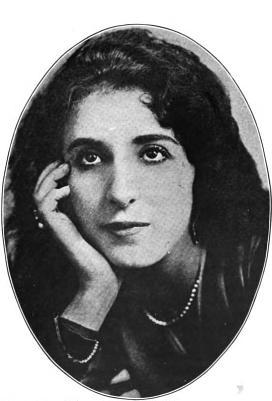
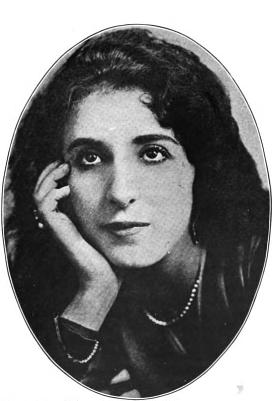
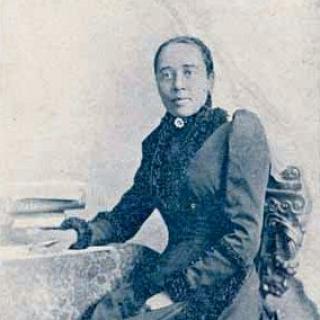
![Sketch of the mythical fuan by Pearson Scott Foresman. [Source: Wikipedia]](/sites/default/files/styles/crop_320x320/public/2023-10/Goatman_Wikipedia_Faun_2_%28PSF%29.png?h=64a074ff&itok=C9Qh-PE1)







